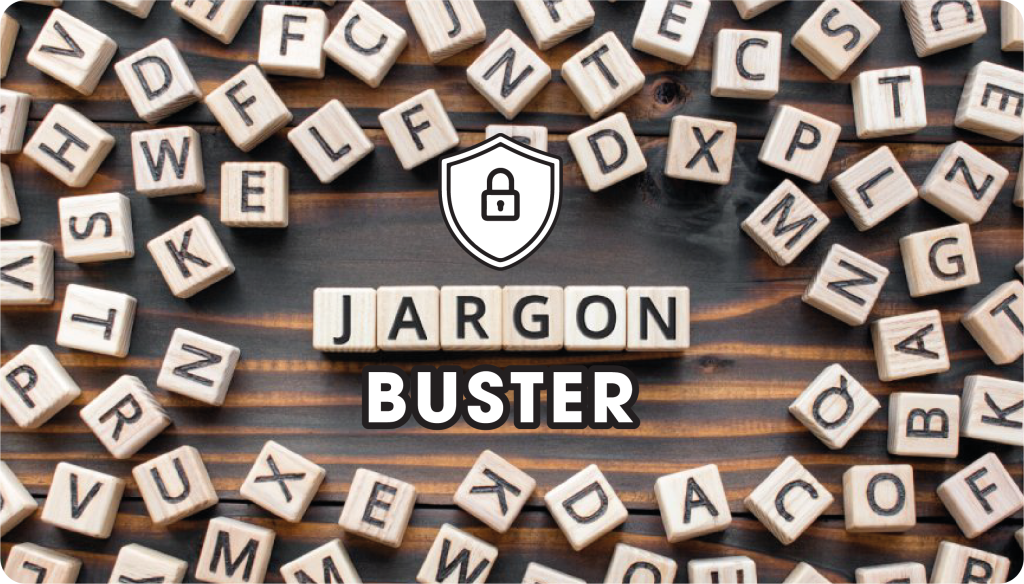Jargon Buster: Demystifying IT Terminology
Cybersecurity Edition

Jargon Buster
The jargon buster aims to give simple, plain English explanations of typical words and/or phrases used in security and cybersecurity, making it easier to stay informed.
Zero Trust:
Security approach assuming no inherent trust, requiring continual user and device authentication.
Phishing:
Cyberattack where malicious actors impersonate entities to trick individuals into revealing sensitive information.
Ransomware:
Malicious software encrypting files, demanding ransom for decryption; paying does not guarantee data return.
Malware:
Malicious software (viruses, Trojans, worms, spyware) designed to harm or exploit computer systems.
Penetration Testing (Pen Test):
Simulating cyberattacks to identify system vulnerabilities and weaknesses.
Multi-Factor Authentication (MFA):
Security process requiring two or more forms of identification for enhanced login security.
Firewall:
Network security device or software filtering traffic based on predefined rules, acting as a barrier between trusted and untrusted networks.
Encryption:
Converting data into code to prevent unauthorised access, ensuring unreadability without decryption key.
Cyber Threat Intelligence (CTI):
Information about potential cybersecurity threats, including tactics employed by malicious actors.
Incident Response (IR):
Structured approach to addressing and managing the aftermath of a cybersecurity incident.
Patch Management:
Regularly updating software, operating systems, and applications to fix known vulnerabilities.
DDoS Attack (Distributed Denial of Service):
Attack flooding a target system with traffic from compromised computers (botnets).
Vulnerability Assessment:
Identifying, classifying, and prioritising security vulnerabilities in systems, networks, and applications.
Two-Factor Authentication (2FA):
Security process requiring users to provide two authentication factors for enhanced login security.
Endpoint Security:
Protection of individual devices from cybersecurity threats.
Data Breach: Incident where sensitive data is accessed, disclosed, or stolen by unauthorized individuals or entities.
Security Audit:
Evaluation of an organisation’s security policies, practices, and controls for effectiveness and compliance.
SOC (Security Operations Centre):
Centralised unit monitoring, detecting, and responding to cybersecurity incidents in real-time.
DMZ (Demilitarised Zone):
Network segment separating internal and external networks, often used for public-facing services.
SIEM (Security Information and Event Management):
Software providing real-time analysis of security alerts from various network sources.
Want to learn more about our services?
Other Articles & Blogs
Affordable VoIP Solutions for Small Businesses
Affordable VoIP Solutions for Small BusinessesClear, reliable communication is at the heart of every successful business. Whether you’re speaking with customers, liaising with suppliers, or collaborating internally, the right system should empower your team, not hold...
Lessons in Software Implementation: What the UK Digital ID Project Can Teach Us
Lessons in Software Implementation: What the UK Digital ID Project Can Teach UsThe UK’s government’s proposed Digital ID scheme - “BritCard” - is one of the most ambitious software and systems projects in recent years. While the headlines focus on privacy and public...
Unity News: Tech Shop Officially Launches
Unity News: Tech Shop Officially LaunchesOn 15th August, we hit a huge milestone at Unity with the launch of Unity Tech Shop, our brand new e-commerce platform giving partners instant access to 100,000+ products from 80+ trusted brands. From Dell and HP to Cisco and...



